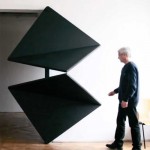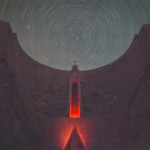 |
The Fujifilm X-Pro series has historically been marketed to a certain type of photographic purist and is part of a small group of cameras aiming to offer the most analog-like experience possible in an increasingly digital world.
The latest iteration brings a change that in many ways, doubles down on the traditional concept of the X-Pro-series. While it sees a host of expected under-the-hood improvements, like an updated sensor and electronic viewfinder, the most radical update to the X-Pro3 is the unique implementation of a hidden, touch-sensitive rear LCD.
I had the chance to shoot around with a pre-production X-Pro3, while on holiday in California. What follows are my initial impressions on the design of the camera.
All of the images in this article were shot using a pre-production sample of the X-Pro3. As such, image quality may not match the output of final shipping cameras, but is likely to be close.
Duality of the hidden display
 |
| The hidden display in some ways made me more appreciative of my surroundings and less concerned with snapping a million photos. The wine also helped. Out of camera JPEG, shot using the ‘Velvia / Vivid’ film simulation. ISO 160 | 1/1000 sec | F5.6 | XF 50mm F2 R WR |
The addition of touch-sensitivity to the rear LCD counts as pretty darn radical for the X-Pro-series, but the fact that it’s hidden, with no default rear preview, is radical for digital cameras in general (we see you, Leica M-D). This was a design I grew to both appreciate and be frustrated with while cruising the back country roads of Northern California. On the one hand, it made me more decisive in choosing whether I wanted to frame with the EVF or LCD – I mostly committed to the former. And when I did use the LCD to compose, the small inconvenience of flipping out the screen caused me to slow down and be more deliberate.
This was likely Fujifilm’s intention with the camera’s concept: to make you think more about the image you’re taking, rather than just shooting and ‘chimping’ the rear screen immediately after pressing the button. In other words, to get you closer to the experience of using a film camera.
The small inconvenience of flipping out the screen caused me to slow down and be more deliberate
On the other hand I missed a lot of shots because the moment had passed before I could fumble the LCD open or get the finder to my eye in time: these were mostly snapshots of funny moments with my partner. And sometimes it’s these casual snaps that are the most special, interesting or telling. How foolish I felt for not better appreciating the near-instantaneous live view nature of other mirrorless cameras.
I also found it was an adjustment not being able to pick up the camera and jump right into menus to change a setting, without taking the time to uncover the LCD. Yes, you can access them with your eye to the finder, but it’s hardly an ideal way to navigate settings. There’s also a distinct pause before they appear.
Waist-level shooting at a touch
 |
| Flip-out touchscreens can be quite handy for landscapes. Out of camera JPEG, shot using the “Velvia / Vivid” film simulation. ISO 160 | 1/1100 sec | F5.6 | XF 23mm F2 R WR |
Despite the LCD’s fumbly nature, I did find the ability to frame from the waist level, while using the screen to focus or fire the shutter, to be invaluable for candid-style shooting as well as landscape photography (like the shot above). And while some street shooting purists may disagree with this approach, there’s no questioning how simple and practical it is. That said, the screen’s 180-degree articulation means it doesn’t quite tilt far enough for high-level shots. Boo.
There were a lot of casual images I didn’t take because they happened before I could fumble the LCD open
But let’s take a step back: Both the X-Pro1 and X-Pro2 both had fixed screens with no touch-sensitivity, a fact that always seemed sensible to me. After all, why would cameras emulating a film rangefinder offer such modern conveniences as a touchscreen? But after handling the X-Pro3, I’m willing to part with my old way of thinking and embrace the new. Modern street/documentary/candid-centric cameras should have an articulating touchscreen! And I’m hoping the next generation X100-series camera (I’m a current X100F owner) also has one, just not one that can only be used at waist level.
Love for the sub-monitor
 |
So with the LCD hidden away, what about the flip side? On the back of the camera, where a traditional LCD would normally be, you’ll find a small ‘sub monitor,’ which displays basic camera info, much like a top plate display on an SLR. By default it features a snazzy graphic of the film simulation being used as well as ISO and white balance. It’s truly the digital version of tearing off the film box top and sliding it in the back of your camera: a bit of a parlor trick, but a harmless one at that. I personally love it.
The sub monitor is truly the digital version of tearing off the film box top and sliding it in the back of your camera
But if it’s not your cup of tea you can switch from the ‘Classic’ to the ‘Standard’ display which offers 8 customizable rows of camera info, sans cool film simulation graphic. The only downside to this ‘sub monitor’ is the fact that it’s fairly dim and hard to see in bright light, unless held at a very specific viewing angle.
A worthy upgrade, but not for everyone
 |
| Out of camera JPEG, shot using the new “Classic Negative” film simulation. ISO 2500 | 1/200 sec | F2 | XF 23mm F2 R WR |
Ultimately, the X-Pro3 seems to be a solid update to a beloved series and I applaud Fujifilm for adding touch sensitivity and screen articulation to a line I never dreamed would have these features, as well as a better EVF and sensor. However, the decision to hide the screen is a bit perplexing: part of me wishes Fujifilm simply made the screen mechanism fully articulating. This would allow it to both be used flush against the camera, hidden away, or flipped out, and you could still have the rear ‘sub monitor.’ Why not give the people the choice?
Part of me wishes Fujifilm simply made the screen mechanism fully articulating
Still, I think this design adds something unique to a camera line perhaps struggling to differentiate itself from a lot of other high-end ILCs, including Fujifilm’s own X-T3. It tosses the traditional Fujifilm rules of what a purists’ digital camera should be out the window, while writing a new set.
And at the end of the day, limiting factors often lead to photographic growth: my guess is potential X-Pro3 customers already embrace limitation (after all, the optical viewfinder is best used with a limited range of 23-90mm prime lenses) and they’ll learn to love the camera’s hidden rear display, in time. For everyone else who loathes it at first sight, that’s OK. The X-Pro3 isn’t for you.
Fujifilm X-Pro3 pre-production samples
$ (document).ready(function() { SampleGalleryV2({“containerId”:”embeddedSampleGallery_4905103831″,”galleryId”:”4905103831″,”isEmbeddedWidget”:true,”selectedImageIndex”:0,”isMobile”:false}) });
Articles: Digital Photography Review (dpreview.com)
















































You must be logged in to post a comment.